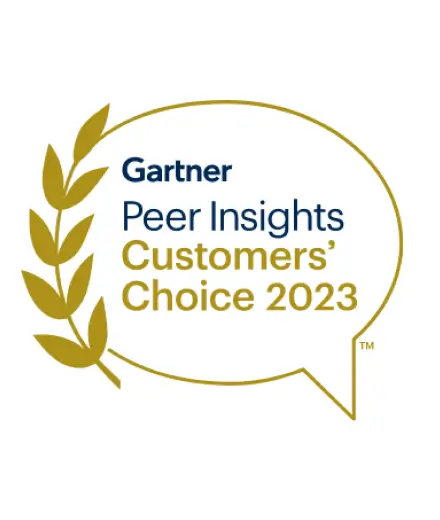Executive summary
Customer segmentation has emerged as an indispensable strategy for businesses aiming to connect meaningfully with their audience. This blog explains customer segmentation, details its various models – from demographic to value-based segmentation – and illuminates why it’s pivotal for targeted marketing strategies. Discover a range of customer segmentation examples and learn about the latest tools, including HubSpot, Salesforce, and Google Analytics, which are revolutionizing the way businesses approach customer data.
Introduction
Imagine a world where every customer feels uniquely understood by your business – this is the power of customer segmentation. In 2024, with markets more diverse and competition fiercer than ever, understanding the layers of your customer base isn’t just beneficial; it’s essential for survival and growth. Customer segmentation is about discovering a treasure trove of insights that can transform your business approach.
Think of customer segmentation as the lens that brings your market into focus. Through this prism, each customer group emerges with distinct needs, behaviors, and preferences. This blog will guide you through the art and science of segmenting customers, equipping you with the knowledge to tailor your products, marketing efforts, and customer interactions in a way that resonates deeply with each segment. Join us as we unlock the potential of customer segmentation and propel your business to new heights in 2024.
What is customer segmentation?
Customer segmentation is like a compass that guides businesses in understanding and catering to the diverse needs of their customer base. It’s a strategic process of dividing customers into distinct groups based on common characteristics. Businesses can form these groups based on various factors, ranging from basic demographic information like age and gender to more intricate details such as purchasing behaviors or lifestyle preferences.
Imagine a bookstore as an example. Instead of a generalized marketing approach, the bookstore identifies distinct customer segments like ‘avid readers,’ ‘academic researchers,’ or ‘young learners.’ Each segment has its own set of interests and buying patterns. For instance, avid readers might be attracted to limited-edition novels. At the same time, academic researchers look for the latest journals in their field, and young learners might be interested in interactive educational books.
By recognizing these unique needs, the bookstore can tailor its inventory, marketing efforts, and customer engagement strategies. This targeted approach not only enhances customer satisfaction but also strengthens brand loyalty by making each customer feel understood and valued.
Moreover, customer segmentation transcends traditional marketing boundaries. In the data-oriented world of 2024, businesses have access to various tools and technologies that can dissect and analyze customer data with remarkable precision. This capability allows for the creation of highly specialized segments based on intricate behavioral patterns, such as purchasing frequency, brand interactions, and even sentiment toward specific marketing campaigns.
Customer segmentation in 2024 is more than just recognizing the diversity within your customer base. Instead, it’s about embracing and capitalizing on that diversity. It’s a strategic move that acknowledges each customer as an individual with unique needs and preferences. By adopting a segmentation approach, businesses are providing personalized solutions that resonate with each segment, thereby fostering a deeper, more meaningful connection with their customers.
Types of customer segmentation models
As businesses in 2024 continue to look for ways to offer personalized customer experiences, understanding the diverse array of customer segmentation models becomes paramount. Each model provides a unique lens through which businesses can view and understand their customer base, tailoring their strategies for maximum impact. Let’s understand the various models of customer segmentation, exploring their nuances and practical applications in different industries.
Type 1 – Demographic segmentation
Demographic segmentation is foundational in customer segmentation. At its core, demographic segmentation is about categorizing customers based on socio-economic criteria such as age, gender, income, education level, and occupation. This model is fundamental yet powerful, offering businesses a straightforward way to tailor products and marketing messages.
Consider a fashion brand that segments its market into ‘millennials’ and ‘baby boomers.’ For millennials, the brand might focus on trendy, eco-friendly apparel, while for baby boomers, it might emphasize comfort and classic styles. This segmentation allows for marketing campaigns that resonate directly with each group’s values and lifestyle choices.
Type 2 – Geographic segmentation
Geographic segmentation involves dividing the market based on location. It can be as broad as country-level segmentation or as specific as neighborhood preferences. This model is particularly effective for businesses whose products or services vary in relevance depending on the geographical location of their customers.
A prime example is a global food chain tailoring its menu to regional tastes. In India, they might offer more vegetarian options, while in coastal regions, they could feature seafood prominently. This localization strategy ensures relevance and appeal to the local palate, increasing customer satisfaction and loyalty.
Type 3 – Psychographic segmentation
Psychographic segmentation categorizes customers based on their lifestyle, interests, attitudes, and values. This model is crucial for businesses looking to connect on a more personal and emotional level with their audience.
For instance, a travel agency might segment its customers into ‘adventure seekers,’ ‘culture enthusiasts,’ and ‘luxury travelers.’ Each segment receives curated travel recommendations and deals that align with their travel aspirations and values, leading to higher engagement and conversion rates.
Type 4 – Technographic segmentation
Technographic segmentation is a contemporary model that categorizes customers based on their usage and preferences for technology. It’s particularly relevant in our digital era, where technology preferences can significantly influence purchasing decisions.
A tech company, for example, might segment its market into ‘early adopters’ who are eager to try the latest gadgets and ‘traditional users’ who prefer well-established technology. Marketing efforts and product recommendations can be tailored accordingly to match the technological comfort levels of each segment.
Type 5 – Behavioral segmentation
Behavioral segmentation is about understanding customers based on their interactions with a brand, including purchasing behavior, spending habits, brand loyalty, and product usage. This segmentation provides insights into customer needs and potential pain points.
An e-commerce platform, for example, can segment customers into ‘frequent shoppers,’ ‘seasonal buyers,’ and ‘first-time visitors.’ Personalized marketing campaigns and loyalty programs can be developed to encourage frequent shopping or convert first-time visitors into regular customers.
Type 6 – Needs-based segmentation
This model segments customers based on their specific needs and desires. It’s a powerful approach to identify and address gaps in the market.
A healthcare app might segment its users into ‘fitness enthusiasts,’ ‘diet watchers’, and ‘health monitoring.’ For each group, the app provides tailored features such as workout tracking for fitness enthusiasts or nutritional information for diet watchers, thereby enhancing user experience and engagement.
Type 7 – Value-based segmentation
Value-based segmentation focuses on the economic value of customers. It helps businesses identify and prioritize high-value customers who contribute significantly to revenue.
A luxury car brand, for example, might segment its customers into ‘premium buyers’ who are interested in high-end models and ‘value seekers’ who prefer affordable luxury. Sales strategies and after-sales services can be customized to enhance customer satisfaction and loyalty in each segment.
Why segment customers? Understanding the significance of customer segmentation
Customer segmentation is a comprehensive strategy that touches every aspect of a business. From enhancing customer experience to driving targeted marketing, from fostering product innovation to adapting to changing needs, and from maximizing customer value to ensuring business growth, the benefits of customer segmentation are manifold. Here’s a detailed exploration of the significance of customer segmentation and its impact on businesses.
1. Enhancing customer experience and loyalty
Customer segmentation allows businesses to create tailored experiences. By understanding the unique needs and preferences of different customer groups, businesses can offer personalized products, services, and communications. Besides improving customer experience, this customization also fosters loyalty.
Related reads:
- How can customer journey maps improve customer experiences?
- 10 key customer experience (CX) trends [2024]
2. Driving targeted and effective marketing
Segmentation allows businesses to execute more targeted and efficient marketing strategies. By identifying the characteristics and behaviors of different segments, companies can craft messages that resonate deeply with each group. This approach leads to higher conversion rates and a better return on marketing investment.
3. Optimizing product development and innovation
Customer segmentation provides valuable insights that drive product development and innovation. By understanding the needs and pain points of different segments, businesses can develop products and services that directly address these issues, leading to greater customer satisfaction and market competitiveness.
4. Adapting to evolving customer needs
Customer needs and preferences are not static; they evolve over time. Effective customer segmentation allows businesses to stay agile and responsive to these changes. By continuously analyzing and updating customer segments, companies can anticipate shifts in the market and adapt their strategies accordingly.
5. Maximizing customer lifetime value (CLV)
Segmentation plays a critical role in maximizing the lifetime value of customers. By identifying high-value segments and tailoring strategies to retain these customers, businesses can ensure a steady revenue stream. This approach involves acquiring new customers and also focusing on retaining and growing relationships with existing ones.
How to segment customers and target them effectively
The ability to effectively segment customers and target them based on their unique characteristics is crucial. Effective customer segmentation is a dynamic process that requires ongoing attention and refinement.
Here’s a step-by-step guide to segmenting customers and targeting them effectively:
1. Identify your customer segmentation goals and variables
The foundation of effective customer segmentation lies in defining clear, measurable goals aligned with your business objectives. This process involves determining the basis for segmenting your customer base, which could include demographics, buying behaviors, or preferences. By establishing these parameters, you create a roadmap for detailed segmentation.
Practical tips:
- Align segmentation goals with broader business objectives to ensure consistency across strategies.
- Utilize a mix of quantitative (e.g., sales data) and qualitative (e.g., customer feedback) data to identify segmentation variables.
- Regularly revisit and refine your segmentation goals to adapt to market changes and emerging trends.
2. Set up each customer segmentation project
After establishing your goals, the next step involves setting up individual segmentation projects. Each project should have a specific focus and be designed to address unique aspects of your customer base. This step is crucial for prioritizing resources and ensuring that each segment is actionable and relevant to your business strategy.
Practical tips:
- Prioritize segments based on potential impact and alignment with business priorities.
- Involve cross-functional teams to gain diverse insights and ensure comprehensive coverage of customer needs.
- Establish clear metrics for evaluating the success of each segmentation project.
3. Collect and organize customer data
Effective segmentation relies heavily on robust and accurate customer data. Collecting a wide range of data, from transactional history to customer feedback, provides a comprehensive understanding of your customer base. This data should then be organized in a structured manner to facilitate analysis and segmentation.
Practical tips:
- Leverage technology solutions like CRM platforms to collect and manage customer data efficiently.
- Conduct regular data audits to maintain data accuracy and relevance.
- Embrace data privacy regulations and ensure transparent data collection practices.
4. Segment your customers into groups
This step involves analyzing the collected data to form distinct customer groups based on the predetermined variables. Each group should represent a segment of your customer base with shared characteristics, enabling targeted marketing and personalized experiences.
Practical tips:
- Utilize data analytics tools for sophisticated segmentation, including AI and machine learning algorithms.
- Avoid creating too many small segments that may be difficult to target effectively.
- Ensure segments are flexible enough to accommodate evolving customer behaviors and preferences.
5. Market to your customer segments
Once segments are established, tailor your marketing efforts to address the specific needs and preferences of each group. Personalized marketing can significantly enhance customer engagement and drive higher conversion rates.
Practical tips:
- Develop customized messaging and campaigns for each segment, reflecting their unique characteristics and preferences.
- Continuously test and refine marketing strategies based on segment response and feedback.
- Leverage omnichannel marketing to reach customers where they are most active.
6. Run regular customer segmentation analyses
Customer segmentation is not a one-time activity; it requires ongoing analysis and refinement. Regularly reviewing and updating your segments ensures that they remain relevant and effective in an ever-changing market landscape.
Practical tips:
- Schedule periodic reviews of segmentation effectiveness using both quantitative metrics and qualitative insights.
- Be prepared to adjust or redefine segments based on new data, market trends, or changes in business strategy.
- Foster a culture of continuous improvement, encouraging feedback from all stakeholders involved in segmentation.
7 Customer segmentation examples
Customer segmentation is a practical tool that real businesses use to drive growth, enhance customer relationships, and tailor their products and services. Here, we explore examples from various industries to illustrate how customer segmentation is effectively implemented.
1. Demographic segmentation example
Example: A major retail clothing chain implements demographic segmentation by categorizing its customers into different age groups and tailoring its product lines accordingly. For teenagers, they focus on trendy, affordable fashion, while for middle-aged customers, they offer a mix of casual and formal wear that balances style with comfort.
Impact: By addressing the specific style preferences and spending habits of each age group, the retailer increases customer satisfaction and loyalty, leading to higher sales and repeat business.
2. Geographic segmentation example
Example: A global hotel chain uses geographic segmentation to tailor its services and amenities to local preferences and cultural norms. In Japan, they offer rooms with traditional tatami mats and onsen-style baths, while in Italy, they focus on providing gourmet dining experiences featuring local cuisine.
Impact: This approach enhances the guest experience by providing a local flavor, which is particularly appealing to travelers seeking authentic experiences, thereby boosting the hotel’s reputation and attracting more bookings.
3. Psychographic segmentation example
Example: A fitness app segments its users based on their lifestyle and fitness goals. One segment includes ‘health enthusiasts’ who focus on holistic well-being, while another encompasses ‘performance athletes’ aiming for high-intensity training.
Impact: The app provides personalized workout and nutrition plans for each segment, leading to increased user engagement and subscription renewals due to the highly tailored and relevant content.
4. Technographic segmentation example
Example: A software company segments its clients based on the tech ecosystems they operate in. One segment uses cloud-based technologies, while another relies on traditional on-premise solutions. The company then develops and markets specific products for each technological environment.
Impact: This segmentation ensures that the company’s products are highly relevant and compatible with the customers’ existing tech infrastructure, leading to higher customer satisfaction and reduced churn rate.
5. Behavioral segmentation example
Example: An online bookstore segments its customers based on purchasing behavior. Regular buyers receive loyalty discounts and early access to new releases, while occasional buyers receive targeted promotions to encourage more frequent purchases.
Impact: This strategy increases customer lifetime value by incentivizing regular purchases from loyal customers and converting occasional buyers into more frequent shoppers.
6. Needs-based segmentation example
Example: A telehealth service provider segments its patients based on their healthcare needs – chronic disease management, mental health support, or general wellness advice. Each segment receives tailored health plans and consultations.
Impact: By addressing the specific health needs of each segment, the service enhances patient satisfaction and outcomes, leading to better retention and word-of-mouth referrals.
7. Value-based segmentation example
Example: A luxury watchmaker segments its customers into ‘high-end collectors’ seeking exclusive, limited-edition models and ‘aspirational buyers’ looking for accessible luxury. Marketing and sales strategies are tailored accordingly.
Impact: This approach allows the company to maximize profits by catering to the high spending power of collectors while expanding its market share among aspirational buyers, thereby balancing exclusivity with accessibility.
10 Best customer segmentation tools in 2024
Customer segmentation tools simplify the segmentation process and enhance the precision and effectiveness of marketing strategies. Let’s explore some of the best customer segmentation tools available in 2024, highlighting their key features and benefits.
1. HubSpot
HubSpot stands out for its integrated CRM platform, offering seamless customer segmentation capabilities along with a suite of marketing tools. It enables businesses to create dynamic customer segments based on real-time data, optimizing marketing campaigns and improving customer engagement.
2. Salesforce
Salesforce, known for its powerful CRM solutions, offers advanced customer segmentation features that leverage artificial intelligence through its Einstein Analytics. It provides businesses with deep insights into customer behavior, helping to tailor marketing efforts more effectively.
3. Marketo
Marketo, part of Adobe Experience Cloud, excels in automation and personalization, offering robust segmentation tools ideal for large-scale marketing campaigns. Its ability to integrate with various data sources makes it a versatile choice for businesses seeking comprehensive customer insights.
4. Intercom
Intercom specializes in conversational marketing and customer support, featuring segmentation tools that help personalize customer interactions. This tool is particularly effective in segmenting audiences based on interaction history and enhancing customer support and engagement.
5. Mailchimp
Mailchimp, widely recognized for its email marketing capabilities, also offers intuitive customer segmentation features suitable for small to medium-sized businesses. Its user-friendly interface and automation tools make it a popular choice for businesses looking to start with customer segmentation.
6. Zendesk
Zendesk excels in customer service with segmentation capabilities that streamline support queries and improve customer satisfaction. It enables businesses to categorize and prioritize customer interactions, ensuring a more personalized support experience.
7. Zoho CRM
Zoho CRM offers a comprehensive suite of tools for sales and marketing, including efficient customer segmentation options. Its versatility in managing customer data across multiple channels makes it a well-rounded tool for diverse business needs.
8. Google Analytics
Google Analytics remains a staple in digital marketing, providing detailed insights into website visitor behavior for effective segmentation. Its ability to track and analyze online customer interactions is invaluable for businesses focused on digital marketing strategies.
9. Segment
Segment specializes in data integration and management, offering tools that consolidate customer data from various sources for effective segmentation. This tool is ideal for businesses seeking a centralized platform to manage and analyze customer data comprehensively.
10. Optimove
Optimove is known for its data-driven approach to customer segmentation, utilizing predictive analytics to enhance customer engagement and retention. It stands out for its ability to automate highly personalized marketing actions based on customer behavior and preferences.
How do Yellow.ai’s chatbots help in customer segmentation?
Yellow.ai’s AI chatbots are far more than just conversational agents. These AI chatbots sift through layers of customer interactions to uncover valuable insights for effective customer segmentation. By analyzing customer conversations, these chatbots gather critical data points – from personal preferences to behavioral patterns. This data enables businesses to segment their customers accurately. With Yellow.ai’s chatbots, businesses can go beyond traditional demographic segmentation to unlock psychographic and behavioral segmentation, offering a deeper understanding of their customer base.
These chatbots are strategic tools in the art of personalization. As they interact with customers, they learn and adapt, continuously refining the customer segments. This dynamic approach allows businesses to tailor their marketing efforts, product recommendations, and overall customer engagement strategies in real time. These AI chatbots can transform customer interactions into actionable insights, paving the way for businesses to meet and anticipate customer needs and elevating the customer experience to new heights.
Key features of Yellow.ai:
- AI-powered interactions: Yellow.ai’s chatbots are not just scripted responders. They are equipped with cutting-edge AI, enabling them to understand and respond to customer queries with a human-like touch.
- Round-the-clock service: These bots are tirelessly at work 24/7, ensuring no customer query goes unanswered, regardless of time constraints.
- Multilingual capability: Catering to a global audience, Yellow.ai’s bots can converse and assist in over 135 languages and dialects, demolishing language barriers in customer support.
- Seamless integration: Yellow.ai chatbots easily integrate with existing CRM systems, providing a unified view of customer interactions and histories.
- Scalability: As your business grows, so does Yellow.ai’s capacity to handle an increasing volume of customer interactions without compromising on quality.
- Data-driven insights: Beyond handling queries, these bots provide valuable analytics, offering deep insights into customer preferences and behavior.
Yellow.ai is a transformational force that drives efficiency, enhances customer satisfaction, and redefines the scope of automated support.
Ready to revolutionize your customer support experience?

The final thoughts on customer segmentation
The landscape of customer preferences is ever-evolving, and so should our approaches to understanding and catering to these changes. Customer segmentation is not merely about data analysis; it’s about building a bridge to customers’ hearts and minds. As 2024 continues to unfold, let these insights and strategies be active blueprints in your business journey. Remember, the essence of customer segmentation is to see customers not as mere data points but as individuals with unique stories, needs, and aspirations.
Frequently asked questions (FAQs)
What are the 4 bases of customer segmentation?
The four primary bases of customer segmentation are Demographic (age, gender, income), Geographic (location, climate), Psychographic (lifestyle, values), and Behavioral (purchase history, brand interactions). These bases offer diverse lenses to understand and cater to varying customer needs.
What are the three customer segments?
Typically, customer segments are classified as Demographic, Psychographic, and Behavioral. However, this can vary based on the model used. For instance, some models also consider Geographic and Technographic segmentation as key categories.
What is a customer segmentation tool?
A customer segmentation tool is a software or system that helps businesses categorize their customer base into distinct groups based on various factors like purchasing behavior, demographic details, and personal preferences. These tools aid in tailoring marketing efforts and product offerings to meet specific customer needs.
What is an example of customer segmentation?
An example of customer segmentation can be seen in retail. A clothing brand might segment its customers into categories like ‘Young Adults,’ ‘Working Professionals’, and ‘Retirees,’ each with distinct fashion preferences and spending patterns, allowing for targeted marketing and product lines.





























